Nationality American Role Architect Books The legacy of Albert Kahn | Siblings Moritz Kahn Name Albert Kahn | |
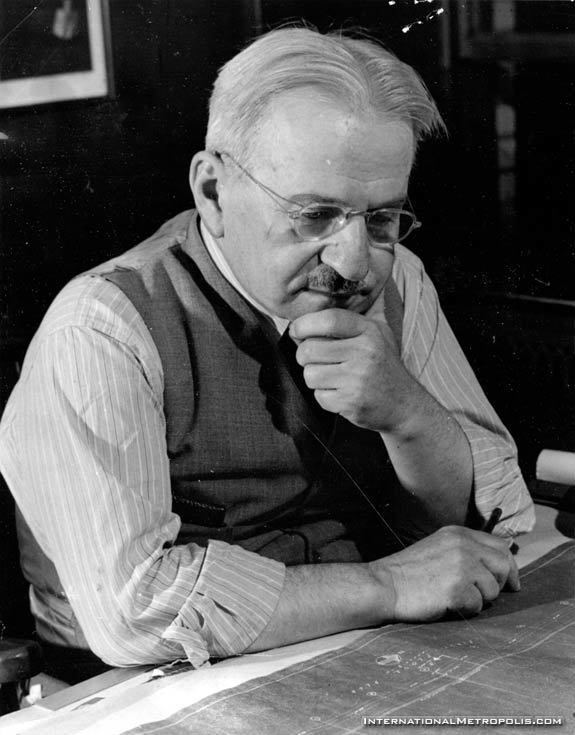 | ||
Structures Fisher Building, Cadillac Place, Edsel and Eleanor Ford Hou, Ford Motor Company Assembly, Hill Auditorium Similar People C Howard Crane, Henry Ford, Jens Jensen, Joseph Nathaniel French, Edsel Ford | ||
Albert kahn architect
Albert Kahn (March 21, 1869 – December 8, 1942) was the foremost American industrial architect of his day. He is sometimes called the "architect of Detroit". In 1943, the Franklin Institute awarded him the Frank P. Brown Medal posthumously.
Contents
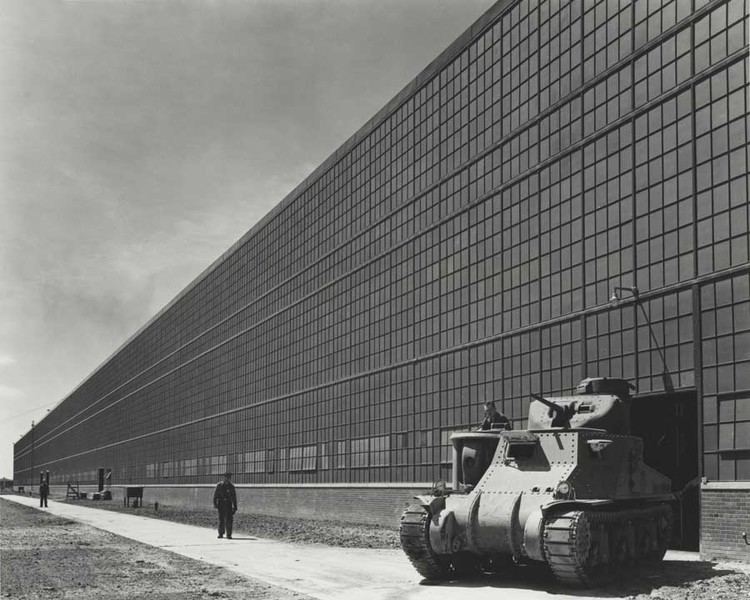
Albert kahn
Biography
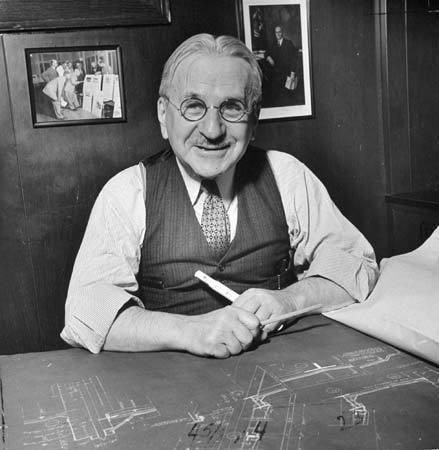
Kahn was born to a Jewish family on March 21, 1869 in Rhaunen, Kingdom of Prussia. Kahn came to Detroit in 1880, at the age of 11. His father Joseph was trained as a rabbi; his mother Rosalie had a talent for the visual arts and music. As a teenager, he got a job at the architectural firm of Mason and Rice. In 1891, Kahn won a year's scholarship to study abroad in Europe, where he toured Germany, France, Italy, and Belgium with another young architecture student, Henry Bacon, who would later design the Lincoln Memorial in Washington, D.C..
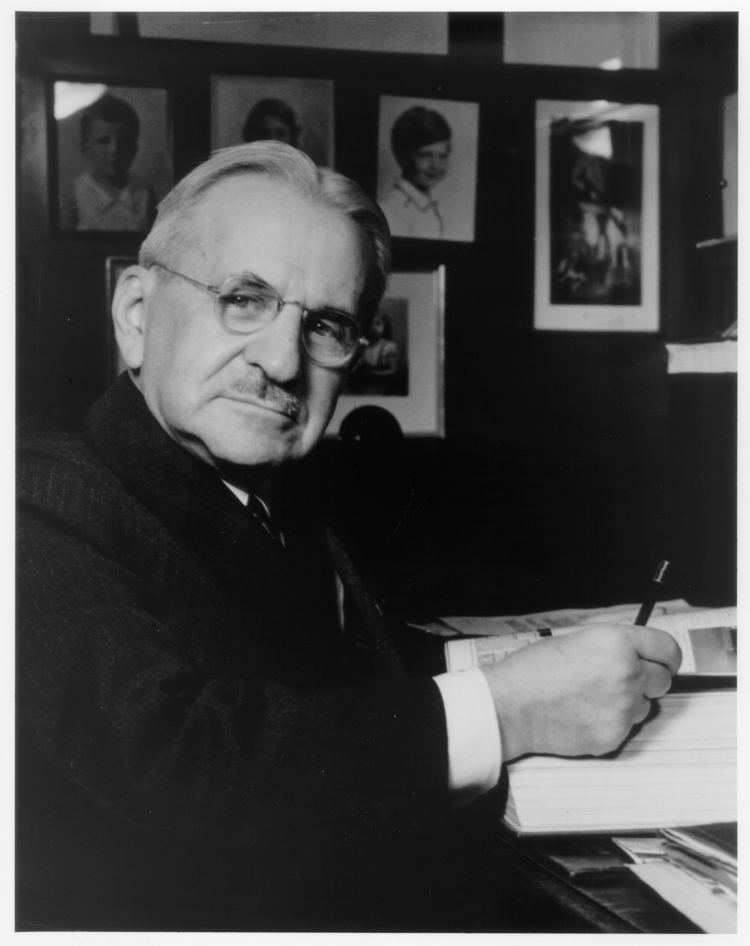
In 1895, he founded the architectural firm Albert Kahn Associates. Together with his younger brother Julius, he developed a new style of construction where reinforced concrete replaced wood in factory walls, roofs, and supports. This gave better fire protection and allowed large volumes of unobstructed interior. Packard Motor Car Company's factory, designed in 1903, was the first development of this principle.
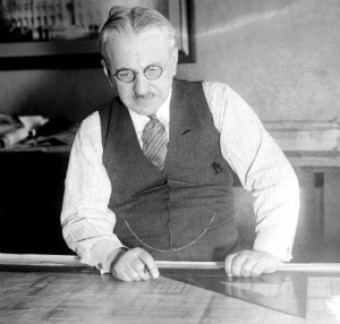
The success of the Packard plant interested Henry Ford in Kahn's designs. Kahn designed Ford Motor Company's Highland Park plant, begun in 1909, where Ford consolidated production of the Ford Model T and perfected the assembly line.
Kahn later designed, in 1917, the massive half-mile-long Ford River Rouge Complex in Dearborn, Michigan. The Rouge grew into the largest manufacturing complex in the U.S., with a force that peaked at 120,000 workers.
Kahn was responsible for many of the buildings and houses built under direction of the Hiram Walker family in Walkerville, Ontario, including Willistead Manor. Kahn's interest in historically styled buildings is also seen in his houses in Detroit's Indian Village, the Cranbrook House, the Edsel and Eleanor Ford House and The Dearborn Inn, the world's first airport hotel.
Kahn also designed the landmark 28-story Art Deco Fisher Building in Detroit, considered one of the most beautiful elements of the Detroit skyline. In 1928, the Fisher building was honored by the Architectural League of New York as the year's most beautiful commercial structure. Between 1917 and 1929, he designed the headquarters for all three major daily newspapers in Detroit.
On May 8, 1929, through an agreement signed with Kahn by President of Amtorg Saul G. Bron, the Soviet government contracted the Albert Kahn firm to design the Stalingrad Tractor Plant, the first tractor plant in the USSR. On January 9, 1930, a second contract with Kahn was signed for his firm to become consulting architects for all industrial construction in the Soviet Union. Under these contracts, during 1929–1932, Kahn’s firm, at its headquarters in Detroit and the especially created design bureau in Moscow, Gosproektstroi, headed by Albert Kahn’s younger brother, Moritz Kahn, trained over 4,000 Soviet architects and engineers and designed 521 plants and factories under the First Five-Year Plan.
Kahn also designed many of the classic buildings at the University of Michigan in Ann Arbor. These include the Burton Memorial Tower, Hill Auditorium, Hatcher Graduate Library, and William L. Clements Library. Kahn said later in life that out of all the buildings he designed, he wanted most to be remembered for his work on the William L. Clements Library.
A frequent collaborator with Kahn was architectural sculptor Corrado Parducci. In all, Parducci worked on about 50 Kahn commissions including banks, office buildings, newspaper buildings, mausoleums, hospitals and private residences.
Kahn's firm designed a large number of the army airfield and naval bases for the United States government during World War I. By World War II, Kahn's 600-person office was involved in making Detroit an important element of America's Arsenal of Democracy. Among others, the office designed the Detroit Arsenal Tank Plant, and the Willow Run Bomber Plant, Kahn's last building, located in Ypsilanti, Michigan, where Ford Motor Company mass-produced Consolidated B-24 Liberator bombers.
In 1937, Albert Kahn Associates was responsible for 19 percent of all architect-designed factories in the U.S. In 1941, Kahn received the eighth highest salary and compensation package in the U.S., $486,936, on which he paid 72% in tax.
Albert Kahn worked on more than 1,000 commissions from Henry Ford and hundreds for other automakers. Kahn designed showrooms for Ford Motor Company in several cities including New York, Washington, D.C., and Boston. He died in Detroit on December 8, 1942.
As of 2006, Kahn had approximately 60 buildings listed on the National Register of Historic Places. Not all of Kahn's works have been preserved. Cass Technical High School in Detroit, designed by Malcomson and Higginbotham and built by Albert Kahn's firm in 1922, was demolished in 2011 after vandals had stripped it of most of its fixtures. The Donovan Building, later occupied by Motown Records, abandoned for decades, was demolished as part of Detroit's beautification plan before the 2006 Super Bowl XL.
Twelve Albert Kahn buildings are recognized by official Michigan historical markers:
He is not related to American architect Louis Kahn.
Kahn-designed buildings
All buildings are located in Detroit, unless otherwise indicated.BUILDINGS AT THE UNIVERSITY OF MICHIGAN
Campus structures built during his career (source of this list: Schreiber, Penny. “Albert Kahn’s Campus.” The Ann Arbor Observer, January, 2002, pp. 27–33):
Not included on the list:
Greek Organization Buildings:
